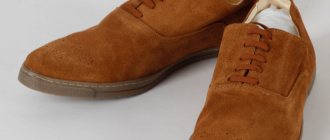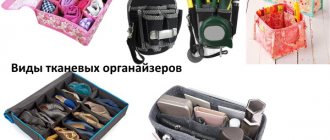Organizing compact shoe storage is not an easy task. The problem is especially pressing in large families and owners of small apartments.
Human imagination is inexhaustible and offers a lot of options for storing out-of-season shoes.
For example, plastic shoe boxes: we’ll look at their pros and cons, types, prices, how to choose and other nuances today.
Pros and cons of plastic containers
The storage container should protect shoes from dust, friction, damage and ensure order in the house. One of the budget options is plastic boxes. Manufacturers produce a wide variety of models to suit every budget.
Product advantages:
- average price category;
- identical size, thereby achieving compactness and saving space in the room;
- transparency will allow you to quickly find the right pair;
- ease of care;
- there are holes for ventilation;
- can be washed;
- easy to assemble and disassemble;
- when disassembled, they take up minimal space;
- variety of shapes and sizes;
- reliability and strength;
- ease;
- versatility;
- with proper care they can last a long time.
Disadvantages of plastic boxes:
- in products without holes there is no air exchange, which can lead to mold;
- low-quality models can be hazardous to health;
- allow sunlight to pass through;
- thin plastic is not durable.
As you can see, the pros far outweigh the cons. In this regard, plastic boxes can rightfully be considered an excellent solution for storing shoes.
Under the stairs
An excellent opportunity to save space for storing shoes is to use the steps of the stairs leading to the second floor as drawers.
You can also equip the steps of a children's bunk bed, the podium of a sofa, banquettes in the hallway, armchairs and similar structures with drawers.
Types of Shoe Boxes
Most often, boxes are made of white or colored plastic. Products can be:
- With hinged lids.
- Fully removable lid.
- Drawers.
- Handles for carrying.
- In the form of a suitcase.
- Assembled from several products.
in size :
- for men's,
- women's shoes,
- boot,
- ankle boots,
- boot.
You should always read the information on the label carefully.
Standard sizes are as follows:
- for men's shoes 34*21*13;
- for women's shoes 30*18*10;
- for boots 52*30*11.5.
Sizes may vary slightly among different manufacturers and models.
In terms of strength, plastic can be thin and dense . The first option will not support more than three to four boxes stacked on top of each other. Dense plastic is able to retain its shape in any design.
Some online stores offer special modules made from boxes stacked on top of each other like a chest of drawers with a pull-out mechanism. There can be a small number of them - 3, 4, 5, or large structures of 6, 9, 12 or more boxes.
It's April, which means the change of seasons in Russia. We are disarming: we are replacing winter boots, fur boots, Uggs and felt boots with light demi-season shoes and looking forward to a couple of months in shoes, sandals and slippers.
Where will our winter shoes wait out the short months of summer? There are as many ways as there are housewives. We were once again convinced of this when collecting materials for the article.
“Native” shoe box.
This is the most common way of storing any shoes in general for many housewives.
pros
• The “original” box will exactly fit the size of a specific pair; • The cardboard box provides the shoes with the necessary level of humidity and protects them from direct sunlight; cardboard “breathes”, which is very important so that mold does not appear on shoes or fungus does not develop; • Shoe boxes are usually strong and durable; it’s not for nothing that Marie Kondo likes to put things in them. You can wipe dust off them even with a damp cloth. And when the box becomes unusable, simply recycle it; • You already paid for the box when you bought the shoes.
Minuses
• It is difficult to remember which box contains what if it is not labeled on the outside; • The boxes do not have a universal size, so it is difficult to organize convenient shoe storage; boxes stacked on top of each other often look like an untidy heap; • When a cardboard box wears out, it becomes a source of dust. If you are allergic or want to reduce the amount of dust in your home, storing in a cardboard box is not your option;
In principle, the problem of finding shoes in cardboard boxes can be solved: just attach a photo of the contents to the end of the box.
Yes, you can work with the design.
I, like many people, keep some of my shoes in their “original” boxes. I don’t like this type of storage because the assorted cardboard boxes take up a lot of space. All children's shoes for growing up are in boxes, and to find the right pair, I usually take everything off the mezzanine and look through it one by one. Nope! Go on a quest to find the perfect solution.
Special containers.
An alternative to cardboard boxes of different sizes are special shoe boxes. I've seen a lot of options and they all look great when stored organized. The shelves of a closet or dressing room look neat. Often special boxes have transparent walls or windows through which you can see what is in it.
I'll start with the same cardboard boxes. Shoe storage can be organized in specially purchased cardboard boxes . They can be the same size and design, and this will immediately improve the appearance of your shelves. At the same time, all the advantages of the “native” shoe box are preserved. True, I looked through hundreds of pictures of special boxes for shoes and did not see a single one that was suitable in size for bulky or high winter shoes.
Plastic boxes will provide each pair of shoes with their own personal space, protect them from dust, and help organize convenient and aesthetic storage.
And when you need shoes, you can fold the box into a flat “pancake” and put it away until spring. A distinctive feature of the boxes in the photo is that they are designed for high shoes. Ideal for winter and mid-season boots!
Plastic containers with lids are very convenient in everyday life. You can store everything in them - from food to bedding. Why are the shoes worse? The containers are hygienic and durable. If they are the same size, they can be stacked while you are not using them. You don’t have to go broke buying containers - stop by your nearest fixed-price store from time to time, they sell small containers at reasonable prices. However, containers that are the size of a pair of high boots may cost more.
One BUT: shoe manufacturers do not recommend storing them in tightly sealed containers. Fungus and mold like to grow in such enclosed spaces. On reflection, I can offer a gamble: containers can be improved a little. Drill a few holes along the walls for air circulation and get the “right” shoe storage tool.
Textile boxes, which are presented, for example, in a well-known Swedish store, also look great and provide all the needs of shoes and their owners: they organize neat storage, protect shoes from dust and direct sunlight, create minimal visibility and ventilation of the contents thanks to a mesh window, If necessary, they can be folded compactly. The only caveat is that they are only suitable for low shoes or men's boots; women's boots will not fit in them.
Drawers in the closet.
If you have a large closet or dressing room, then shoes can be stored in drawers. Aerobatics - a special closet for shoes.
The photo shows the storage of summer shoes in the dressing room of my colleague Elena. When the warm season arrives, the shoes will move to the hallway. But the storage principle can be used for any other shoes. The drawer is dry and dark, there is no access to dust, and these are ideal conditions for storing it.
Storage on open shelves.
Open shelves are a different story. Here both dust and sunlight can reach your shoes. Therefore, it must be protected. Boxes are fine, but the problem is that not all shelves can fit a thick cardboard box. There is a way out - special devices.
I'll start with the bags. I love it when shoe manufacturers include a textile bag in the box with a new pair. I usually use them all later to store shoes on narrow shelves. In a bag on the shelf, the shoes will “breathe”, while they will be protected from dust and sun. The bags are easy to care for - they can be washed, and when folded they take up minimal space.
But if you haven’t come across such bags, you can buy or make them. If you sew, there are no problems at all; you only need a rectangular piece of fabric and a cord.
You can buy a textile shoe bag It is suitable for one pair of low shoes, for example men's.
When I was preparing this article, I noticed a set of travel cases in our online store. They are intended for linen, but it is clear that the largest of them is suitable for storing high boots.
If you're short on storage space, consider shoe organizers . You can choose an organizer that fits the size of your shelves or any other free space where you can store something.
One organizer can hold from 4 to 6 pairs of shoes, while taking up space comparable to two shoe boxes.
My colleague Evgenia says that an
organizer for 6 pairs can fit 10-12 pairs of summer shoes! In winter, of course, you can’t put in that much. You can place your shoes comfortably - one shoe in one cell. Or you can pack a pair, just don’t forget to stuff the shoes with paper so that they don’t become deformed during storage.
The organizer meets all the requirements that manufacturers set for storing shoes: it protects it from dust, is “ventilated” (made of textiles), and can be wiped with a damp cloth and washed. Compact - when not needed, can be folded into a small package.
Due to the fact that there are plastic inserts in the walls, the organizers hold their shape and can even be stacked one on top of the other (an excellent solution for cabinets with high shelves).
Hanging shelves.
If your closet doesn't have many shelves, you can use hanging fabric shelves. They attach to a rod and create additional storage space. There are even hanging shelves with “doors” - transparent polyethylene with a zipper. They are absolutely perfect for shoes. The fabric base “breathes”, and the curtain protects from dust and gives an overview of the contents.
In principle, you can use
uncovered shelves , but then make sure that your shoes do not collect dust - use bags.
Hanging wardrobe trunks can store not clothes at all, but shoes. Just make sure that direct sunlight does not constantly fall on it.
Shoe care.
Before you put your shoes away for seasonal storage, they need to be put in order. Your shoes will look great next season if you spend a little time caring for them before putting them away. So: • wash the top and sole with warm water; • dry away from heat sources; you can use special devices for drying shoes; if the insoles come out, take them out and dry them too; • treat with a cleaning agent suitable for the type of material from which the shoes are made; • if you are preparing leather shoes for storage, treat them with cream; the cream will moisturize the skin and prevent it from drying out; • treat the inside of the shoes with a special deodorant-antiseptic so that mold or mildew does not appear in them during storage; • stuff the inside of the shoes with paper, newspapers or insert special pads to avoid deformation during storage; You can insert special mold holders or keep the cardboard ones that came with the shoes when you purchased them; • place moth repellents on shoes with fur; • check the heels, look for other damage on the shoes; if it needs repairs, do it now, and not when this pair is urgently needed at the beginning of the next season.
There is a lot to do, but it is better to work out this mechanism once so that the shoes last for several seasons and do not lose their appearance. I advise you to use a timer when working on shoes - determine for the future how much time it takes to prepare them for storage. If you know that all the fuss with out-of-season shoes does not take so much time, you will not delay this matter.
How do you store out-of-season shoes? I suggest discussing this in the comments and in our groups VKontakte , Facebook and Instagram!
How to choose?
The choice of a specific model depends on many parameters:
- taste,
- opportunities,
- family size,
- interior of the room.
How to choose:
First, you need to decide on the size of the space in which you plan to install the boxes.- Evaluate the interior features.
- Inspect all shoes: throw away or give away unnecessary ones, repair, wash, clean, treat with special products.
- Analyze the quantity and types of shoes to understand what box sizes are needed and how many.
- Look in stores to see what manufacturers offer.
- Read reviews.
- Ask the price.
In today's abundance of goods, following clear instructions will help you get rid of spontaneous purchases.
Prices
The variety of models also dictates a wide range of prices. The cost of the product is determined by the quality of the plastic, the size of the box, and the specific model.
The most inexpensive products can be purchased at the Fix Price retail chain from 99 rubles per unit, but they, as a rule, have general economic importance. You need to look for ones with holes. And also look carefully at the dimensions.
Online stores offer the following prices:
| Types of plastic boxes | Price, rub |
| Colored flexible plastic | From 160 |
| Durable transparent plastic | From 220 |
| Models with drawers | From 270 |
| Set of three | From 450 |
| Prefabricated module of 6 pieces | From 824 |
| Prefabricated module of 12 pieces | From 2500 |
| Prefabricated module of 24 pieces | From 7200 |
| Box with carrying handle | From 800 |
| Boot boxes | From 590 |
Depending on the manufacturer, model, and quality of plastic, the cost can vary greatly.
Preparing shoes for storage: inspection, sorting, cleaning.
Before you send boots or warm sneakers for the winter or start packing light shoes and sandals until next summer, they must be prepared in a certain way:
- Replace worn heels and hem or glue loose seams.
- Wash the sole and front part clean.
- Use special electric insoles to dry pre-cleaned boots or sneakers. If this is not done, even seemingly dry shoes can become moldy on the inside and have unsightly stains on the outside.
- Washed and dried shoes made of natural or artificial leather should be lubricated with special creams for care and protection. Suede and nubuck must be treated with special dyes that will restore and preserve the color for a long time.
- Before storage, it is recommended to treat the inner surface of closed models with special antibacterial compounds, which are sold in shoe stores.
How to use?
Before packing boxes for storage, you should pack your shoes properly. If you purchased containers for adult models, then children can come in 2-3 pairs . Slippers, ballet shoes and other flat-soled items can also be stacked in several pairs.
It is better to stack boxes on top of each other, this saves space, so it is better to purchase products made of durable plastic.
There are other options for storing shoe boxes. It can be:
- hallway;
- closet;
- mezzanine;
- niche;
- pantry;
- space under a sofa, bed or stairs;
- wardrobe.
Any secluded room is suitable for storing shoes. The main thing is that there is good air ventilation, darkness and less moisture.
You can put the boxes in a visible place, then it is important to think about the aesthetic component. In this case, one of the main tasks will be not only convenience and compactness, but also beauty. The selected models and colors must correspond to the general idea of the interior.
Storage furniture
Companies offer ready-made furniture for storing various shoes in the hallway, dressing rooms, and storage rooms. You can always make something to order, taking into account the available space, the interior of the apartment, and your own color scheme.
Shoe storage furniture
Shoe furniture options:
- cabinets, cabinets . Unlike classic models, the shelves are located at an angle of 45 degrees. This technique saves space and allows you to see the entire collection;
- shoe racks Option of bedside tables with hinged doors. They have special holders. The shoes do not touch and retain their shape;
- shoe boots . Low cabinets, often with a soft seat on top;
- chests of drawers with compartments . The drawers are equipped with dividers. If you wish, you can easily build cells with your own hands and make them the size that suits you.
When choosing furniture, we recommend giving preference to models with drawers and fastenings of different sizes. Then there will be no problems with storing high-heeled shoes, ballet shoes and high boots.
Moths are attracted not only to fur coats and hats. We recommend using special products in boots with natural fur. You can use lavender, mothballs, wormwood, tansy.
Useful tips
In order not to be upset about an unsuccessful purchase, it is important to consider some points:
- Since plastic is not a “breathable” material, there must be holes in the box.
- An unpleasant, pungent smell of plastic indicates its poor quality; it is better not to buy it.
- You should not store plastic boxes with shoes on an unheated balcony or loggia; during low temperatures, the containers may crack, and the shoes may become deformed or become moldy.
- You need to choose models that do not taper at the bottom; they are inconvenient for storing shoes and arranging boxes in orderly rows.
- It is better to place colored plastic boxes away from sunlight, as the products will fade under its influence.
Cosmetics for shoes
If you are interested in how to store shoes in the summer, then you certainly know that preparing them for storage involves covering them with a special cream. Buy shoe polish that matches the color of your boots. Care products for boots, boots and shoes can be divided into:
- Emulsion creams. These are soft, even delicate products. When applied, they form a protective film on the surface. As a rule, they are used in the warm season.
- Creams based on organic solvents. This is a shoe care classic. They cover the shoe surface with a glossy film. They do not require polishing and shine on their own. The best helpers in bad weather, frost or rain.
During the summer season, periodically air your boots and boots, treat them with cream, this will prevent cracking and deformation of the leather. Treat your shoes very carefully, this will preserve their original appearance and extend their service life.
Features of storing shoes made of different materials
Each type of material requires individual care:
| View | Preparation process |
| Varnished material | Treat with petroleum jelly or glycerin, then pack in paper, after placing spacers inside. |
| Leather | Using a rough brush, rub a special cream into leather shoes. Then polish with a soft cloth, preferably on a flannel backing, install spacers and put each pair in its own box. |
| Rubber | To avoid delamination of rubber, boots should first be treated with glycerin. |
| Suede | Pre-dry suede shoes, then carefully clean the dirt with a special brush and put it in a box or container. |
| Fabric fabric | Wash soiled sneakers in soapy water, dry completely and place in bags with mothballs. |
Important! It is not recommended to store rubber boots and galoshes with mothballs, as the rubber can become harder and change color.
Less popular, but eligible for use, places and methods of storage
If the proposed options seem boring, uninteresting, or for some other reason cannot be applied, there are several more fashionable and extraordinary recommendations:
- Shoe rack made from plastic pipes - convenient, cheap, original;
- Hooks for clothes – can also be used for shoes, hanging them in a vertical position;
- Baskets - not only mounted on the wall, but also installed on the floor;
- The rotating stand is original, but not suitable for boots;
- Wooden pallet - using imagination and sleight of hand, you can make a beautiful shelf for everyday shoes.
How and where to store shoes is up to each individual, but it is important to properly care for them and remember that the place of storage must have good ventilation, spaciousness, volume, and no odors.
By following these tips, your shoes will delight you with their look and comfort season after season.
How to store shoes in the hallway
The classic way is a shoe rack . The structure of such a locker has already been thought out in advance in order to maintain order and help the owner quickly find the necessary boots, sandals and shoes without rummaging through boxes. Pros: shoes do not become covered in dust, are safe from pets and are always within reach. When planning a purchase, you need to calculate how many pairs of shoes you will store in it.
Boxes . Who is not familiar with the situation when, with the arrival of winter, you need to sort through a dozen boxes and find the right pair of treasured boots? To make it easier to navigate strategic reserves, designers and simply resourceful pedants suggest labeling the boxes (the easiest option), pasting a photo of the shoes that are there on them, or buying identical transparent cells.
Boxes with cells . If apartment space is limited, then you should use any available space for storage. I hide my sandals in large transparent boxes under the bed. At one time they were separated by cardboard partitions so that neither pair would interfere with each other, then the cardboard broke, and I was too lazy to recreate this idyll again. When looking for some shoes, it is very convenient to pull out your supplies from under the bed and, seeing the entire “assortment,” select shoes to match your dress. In order to take beautiful shots, I naturally positioned them carefully. In real life, this store-bought look lasts for a couple of days at best.
How to store shoes in a dressing room
Custom cabinets in the dressing room. Oh, what an ideal option! If space and shoe collection allow, then you can select a shelf (or several) in which your favorite sandals will stand, just like on a store display. It is better to make the shelves closed so that dust does not accumulate there in the form of tumbleweeds. It is also worth considering that winter shoes are unlikely to be suitable for such storage, and also that each pair must be carefully cleaned after wearing before putting it in its place of honor on display.
If you don’t have a dressing room, but want to store your shoes like you would at an exhibition, then you can install a sideboard or a shelving unit in the bedroom (maybe even a bookcase will do), which can be covered with a curtain if necessary.
There is a funny quote: “I know how many pairs of shoes women need to be happy - one more than they have.” So let you have as many shoes as you want, and there will certainly be an optimal way to store them.
Add to favorites10
- Tags
- tips review
- storage
tips review, storage











